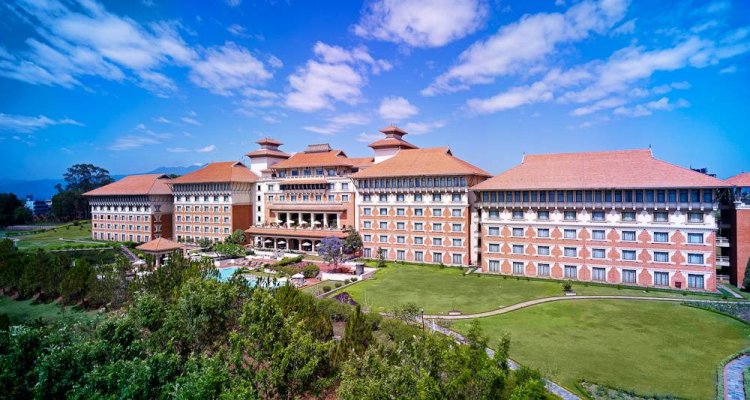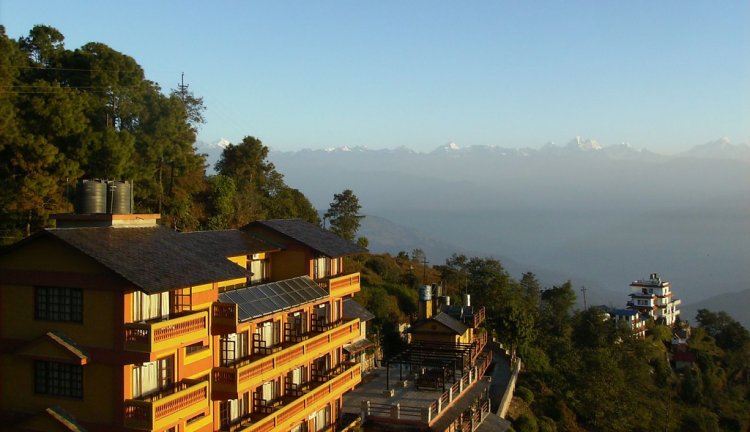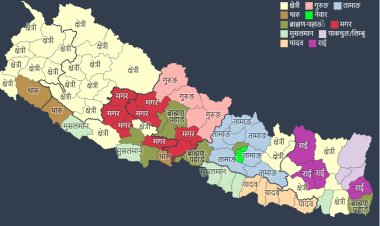Development of hotels in Nepal
Development of hotels in Nepal
Introduction of Hotel:
The term "hotel" was derived from the French word "hotel", meaning "townhouse." The word "hotel" was also derived from the word "hostel," which means a place to stay for travelers. Therefore, a hotel is defined as an establishment that provides lodging (accommodation) facilities to the general public with food and beverage on payment.
The term "hotel" was used for the first time by the 5th Duke of Devonshire to name a lodging house in London in 1760 AD.
Development of hotel industry in Nepal:
The development of hotels has been seen to have started after 1950 AD with the dawn of democracy. Foreign tourists were officially allowed to enter Nepal after democracy, which led to the growth and development of hotels. In Nepal, the concept of hotels was developed around 65 years ago with the opening of "Himalayan Inn" and "Paras Inn" on the new road in 1950 and 1951 AD. Thus, these hotels are considered the first hotels in Nepal. But the actual development of the hotel took place only after the establishment of a hotel called the "Royal Hotel" at Kantpath by a Russian chef, Booritch Lissanevitch. It was the first international standard hotel, which was established in 1954 AD. Similarly, other hotels have also started to come into existence with the increase in tourist arrivals. To meet tourist demand, the hoteliers decided to build standard hotels. As a consequence, Mr. Ram Shankar opened a hotel called "Hotel Shankar" at Lazimpat, Kathmandu, at the old Rana Palace. This hotel was the first four-star rated hotel in Nepal. Similarly, in the year of 1965 AD, Hotel Del Annapurna came into operation, which was the first five-star hotel in Nepal, which was formed under the management of "The Taj Hotel". In 1966 AD, the hotel Soaltee was established, which was under the management of the Oberoi group of hotels, called Soaltee Oberoi. It was established as a deluxe five-star hotel. Likewise, six years later, in 1973 AD, another five-star hotel was established called "Hotel Yak and Yeti".
To promote tourism activities, the "Nepal Tourism Committee" was constituted in 1970 AD. The Nepal Tourism Master Plan, developed in 1972, was the basis for developing the tourism sector. In 1966, NATTA (Nepal Association of Tour and Travel Agents) was established by a group of travel agents. The decade 1970 is also marked as the beginning of nightlife's concept in Kathmandu due to an increase in the number of hippies.
Four-star hotels of Nepal:
|
Name of hotel |
location |
|
|
Akama Hotel |
Dhumbarahi, Kathmandu |
|
|
Grand hotel Kathmandu |
Tahachal, Kathmandu |
|
|
Hotel Barahi |
Barahi path, lakeside Pokhara |
|
|
Hotel Crowne Imperial |
Ravi bavan, Kathmandu |
|
|
Hotel Himalaya |
Kupondole, Kathmandu |
|
|
Hotel Landmark Pokhara |
Lakeside, Pokhara |
|
|
Hotel Manaslu |
Lazimpat, Kathmandu |
|
|
Hotel Mystic Mountain |
Baluwapati, Nagarkot |
|
|
Hotel Nirvana |
Siddhrath Nagar, lumbini |
|
|
Hotel Shankar |
Lazimpat, Kathmandu |
|
|
Hotel Siraichuli |
Bharatpur, Chitwan |
|
|
Hotel Sneha |
Ratna Rajmarg, Nepalgunj |
|
|
Thamel Plaza Hotels and Suite |
Thamel, Kathmandu |
|
|
Hotel Ichchha |
Simara, Bara |
|
Five-star hotels of Nepal:
|
Name of the hotel |
location |
|
Hotel Annapurna |
Durbar marg, Kathmandu |
|
Chandragiri Hills Resort |
Thankot, Kathmandu |
|
Basera Boutique Hotel |
Babarmahal, Kathmandu |
|
Hyatt place |
Tahachal, Kathmandu |
|
Aloft Kathmandu |
Amrit marg, Thamel, Kathmandu |
|
Hotel the Kingsbury |
Birtamod, Jhapa |
|
The Everest hotel |
New Baneshowr, Kathmandu |
|
The Fulbari Resort, and Spa |
Dumge Sagu, Pokhara, Kaski |
|
Tiger palace Resort |
Tilottama , Lumbini |
|
Hotel Pokhara Grande |
Pardi, Kathmandu |
|
The Hotel Soaltee |
Tahachal marg, Ktrhmandu |
|
The Malla Hotel |
Lekhnath Marg, Kathmandu |
|
Sangrila Hotel |
Lazimpat, Kathmandu |
|
Hotel Yak and Yeti |
Durbar Marg, Kathmandu |
|
Radisson Hotel Kathmandu |
Lazimpat, Kathmandu |
|
Hyatt Regency Kathmandu |
Boudha Taragaon, Kathmandu |
Of late, the hospitality industry has been immensely contributing to the national economy since 1977 AD. Nepal has greatly improved in infrastructure and structural support for the development of tourism. The advent of modern tourism activities has brought drastic changes in the hotel industry in Nepal as well. The modern concept of the fashionable generation has changed the overall system of hotels in Nepal. At present, hotels have emerged in almost all the areas of tourist attractions, such as clubs, resorts, golf resorts, safari hotels, wildlife camps, etc., to fulfil the desires of customers.
What's Your Reaction?









































































































